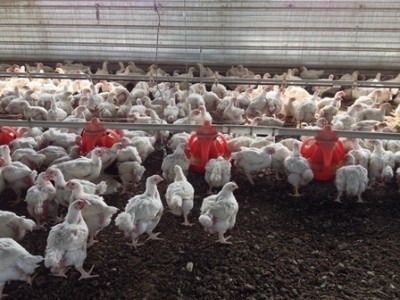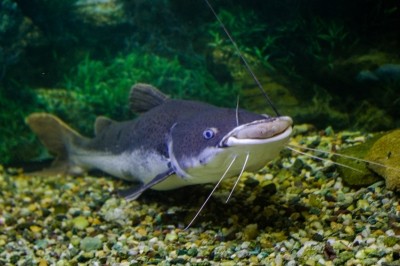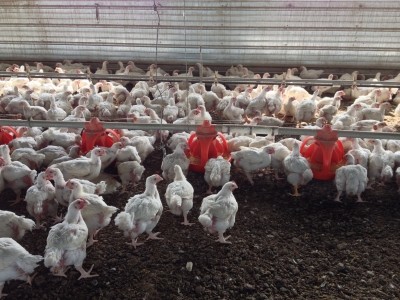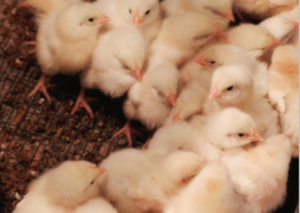Researchers reveal ideal phytase and nutrient mix to make poultry feed more sustainable

Although there are many studies on the use of enzymes in poultry nutrition, the ideal calcium phosphorus ratio has not been established for feed supplemented with phytase, said the researchers, writing in this month’s edition of the Journal of Animal Physiology and Animal Nutrition.
The Brazil based animal nutrition scientists said it is possible to reduce the level of available phosphorus in broiler feed to 1g per kg when this feed is supplemented with the right phytase quantities.
“Furthermore, the calcium level should be fixed at 7.5g per kg to maintain performance and adequate bone mineralization in the birds and to improve the retention coefficients of calcium and phytate phosphorus, thereby optimizing utilization of total phosphorus and reducing the excretion of nitrogen and phosphorus into the environment,” said the authors.
Calcium levels
They said that although the inorganic source of calcium is relatively inexpensive, it is important to assess the optimal level of this nutrient when broiler feed is formulated with a specific phosphorus concentration and supplemented with certain microbial phytases.
“Excessive calcium in the diet may reduce the efficiency of its utilization as well as that of other nutrients, such as phosphorus and it can also reduce the catalytic activity of phytase.
Conversely, nutritional deficiency of calcium can compromise bone integrity and impair broiler performance.
Further studies on mineral metabolism in broilers are therefore needed to generate scientific knowledge that contributes to the formulation of feed without significant excess phosphorus and with an adequate calcium and available phosphorous ratio,” said the authors.
The study
The researchers carried out a trial with broilers from 22 to 33 days of age to evaluate the efficiency of six microbial phytases supplemented in diets that were formulated with three different calcium and available phosphorus ratios.
Microbial phytases were added at a concentration of 1500 units of phytase activity (FTU) per kg of feed.
The team said the phytases used included the following:
Phytase A was a 6-phytase expressed by genetically modified Aspergillus oryzae with two synthetic genes derived from the gene encoding phytase ATCC 51113 in Citrobacter braakii.
Next, Phytase B, was a 6-phytase produced by A. oryzae that was genetically modified with the phytase gene from Peniophora lycii. Phytase C comprised a 6-phytase produced by Schizosaccharomyces pombe ATCC 5233, which was genetically modified with the phytase gene from E.coli.
Phytase D was a second-generation genetic improvement in 6-phytase produced by E.coli while phytase E was a first generation genetic improvement in 6-phytase produced by E.coli and phytase F was ‘wild-type’ 6-phytase produced by E.coli.
The researchers said the ratios of calcium and phosphorus in the feed containing phytase were set at 4.5:1.0, 6.0:1.0 and 7.5:1.0. And the control without phytase was formulated with a calcium phosphorus ratio of 7.5:3.4.
According to the study, 304 male Cobb-500 broilers were used.
One-day-old chicks were purchased, reared in a conventional broiler shed until they were 21 days old and fed a corn and soya bean meal-based diet, said the authors.
At 22 days of age, the birds were individually weighed, separated by weight ranges and transferred to cages in a metabolism room.
Each experimental unit had a similar average initial broiler weight, they added.
Findings
The scientists said that for all phytases and calcium phosphorus ratios evaluated, it was possible to lower the levels of phosphorus in the diet to 1g per kg without affecting the performance of broilers from 22 to 33 days of age, at least when 1500 FTU per kg was included in the feed.
“This result is important because it demonstrates the possibility of using feeds that are based on corn and soya bean meal without adding any source of inorganic phosphorus,” said the authors.
In terms of take-up of calcium by the birds, phytase A was the enzyme that tolerated the greatest variation in the calcium and phosphorus ratio because it provided the highest coefficients of retention among the three ratios under review, said the team.
The maintenance of bird performance may be explained by an improvement in total phosphorus retention due to the incorporation of any of the phytases, they added.
Although the feed containing 7.5g of calcium and 1g of phosphorus per kilo was formulated with a calcium and phosphorus ratio that was approximately 3.5 times greater than that recommended by Rostagno et al (2011), it resulted in a greater retention of total phosphorus, with the authors saying that this was “most likely because it was not deficient in calcium.”
However, to understand these results better, said the Brazilian scientists, further research on the physiology of the absorption and metabolism of these nutrients in broilers is required.
Journal: Journal of Animal Physiology and Animal Nutrition.
Published online ahead of print: OI: 10.1111/jpn.12186
Title: Efficiency of microbial phytase supplementation in diets formulated with different calcium:phosphorus ratios, supplied to broilers from 22 to 33 days old
Authors: L. de P Naves, P B Rodrigues, L do V Teixeira, E C de Oliveira, MM. Saldanha, RR. Alvarenga, A D Correa, RR, Lima











